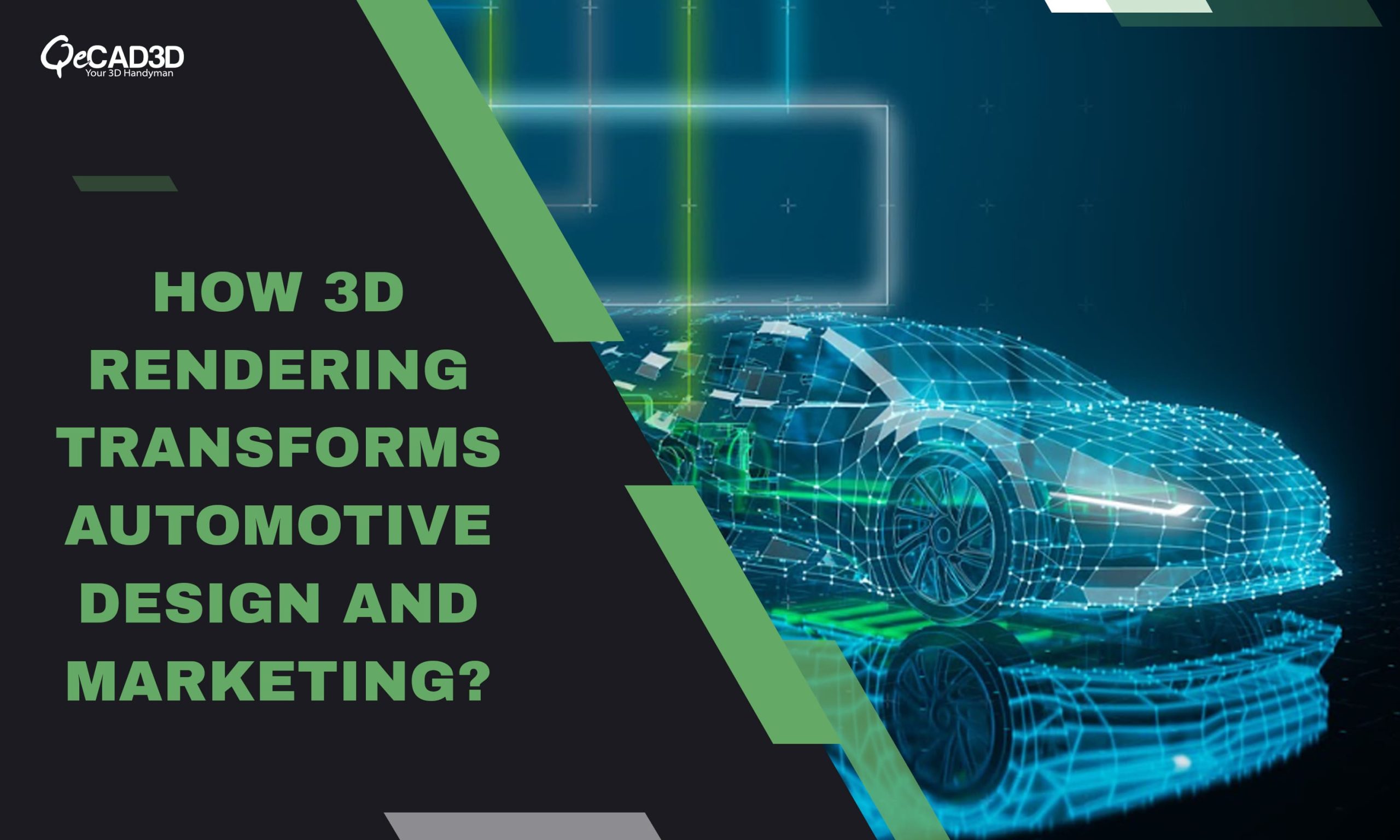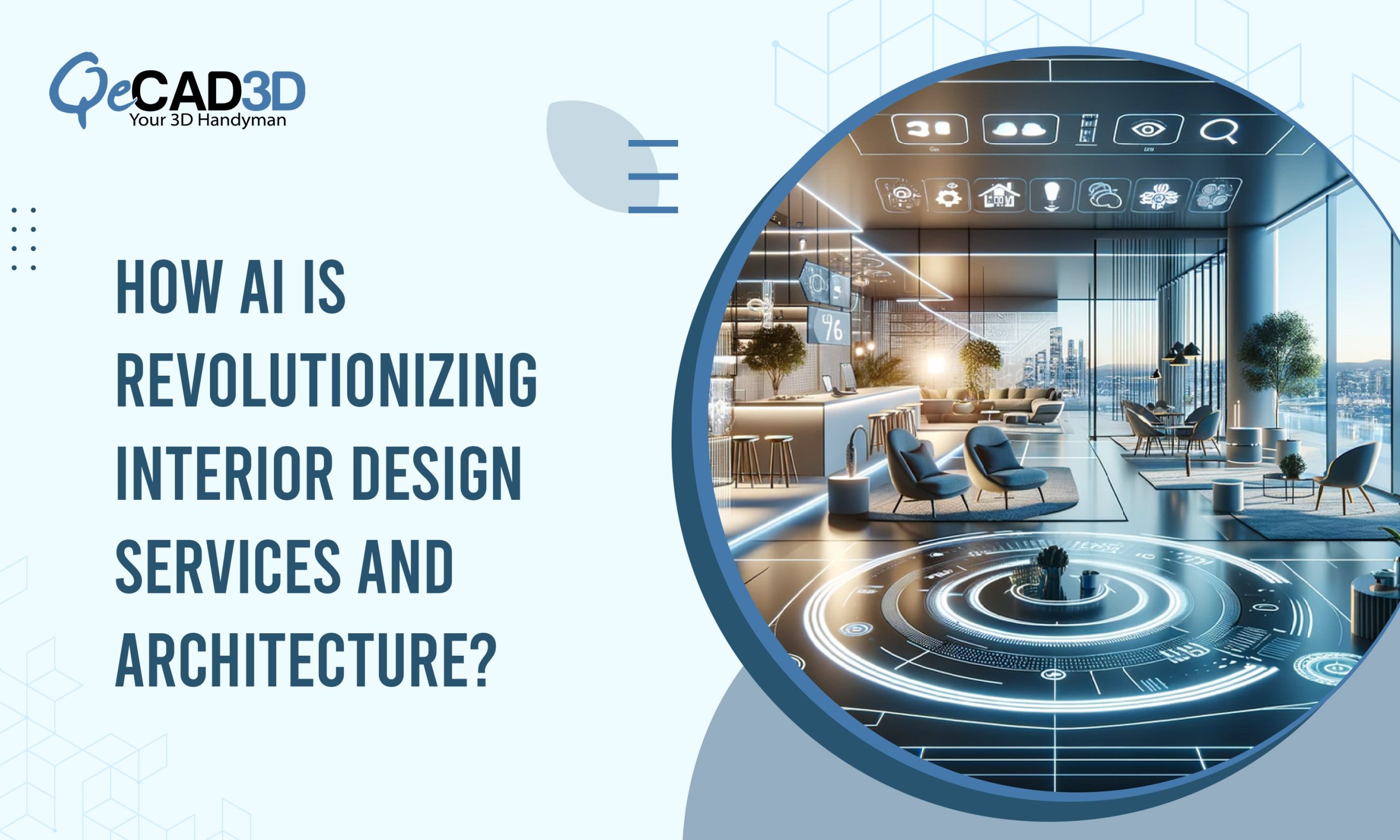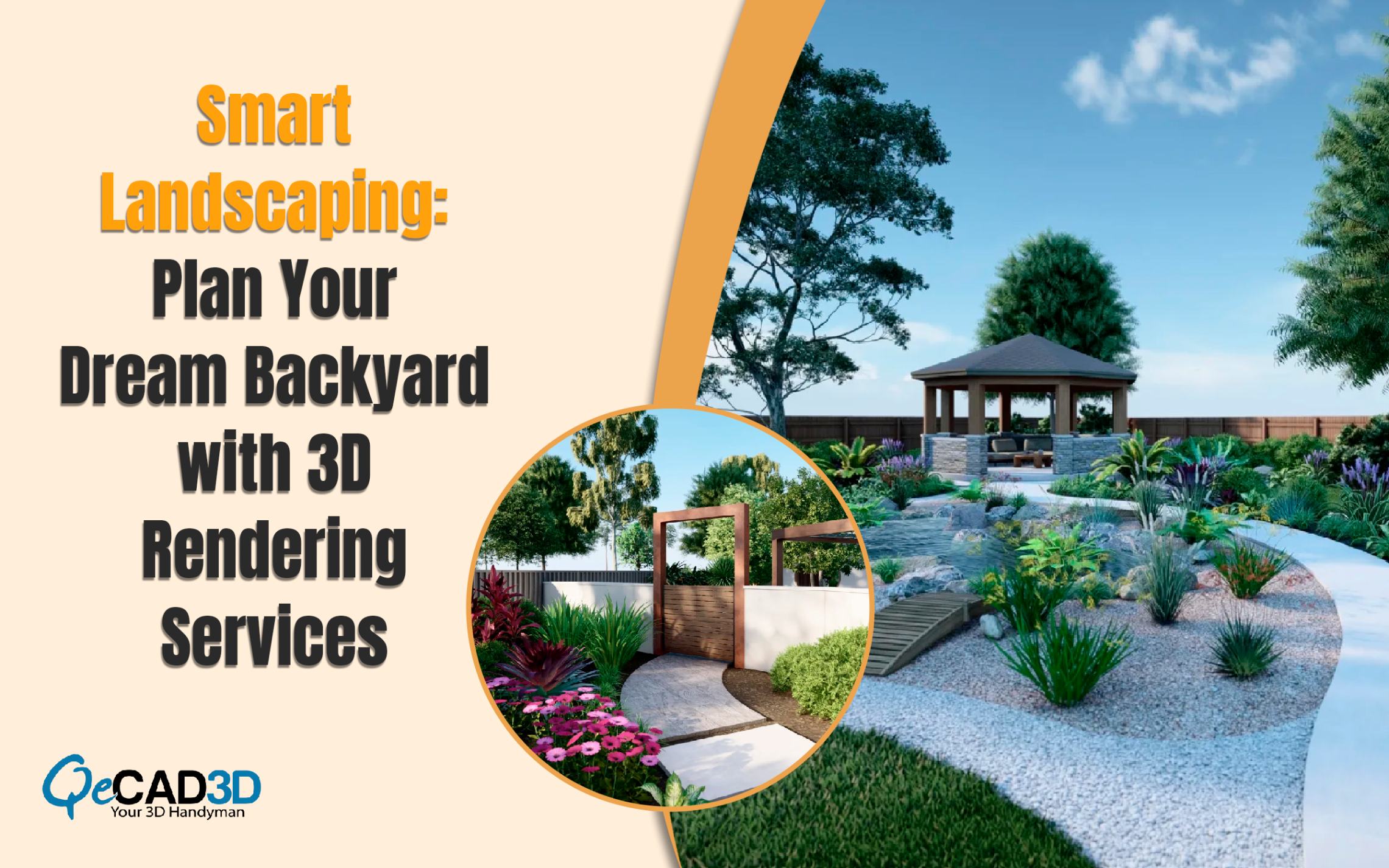How 3D Rendering Transforms Automotive Design and Marketing?
The automotive industry has always been at the forefront of innovation, constantly pushing boundaries in design, engineering, and technology. In recent years, the integration of 3D rendering technology has transformed the way vehicles are conceptualized, designed, and marketed. This transformative tool has not only accelerated the product development process but has has also unlocked fresh pathways for innovation and productivity.
In this article, we delve into the advantages and applications of 3D Rendering Services in the automotive industry, exploring how it’s reshaping the future of mobility.
Advantages of 3D Rendering in the Automotive Industry:
- Enhanced Visualization:
3D rendering allows designers and engineers to create highly realistic visualizations of vehicles before they even exist in physical form. This capability enables stakeholders to visualize concepts more accurately, facilitating better decision-making throughout the design and development stages. Whether it’s assessing proportions, evaluating aesthetic appeal, or testing different color schemes, 3D rendering provides an immersive experience that traditional 2D sketches cannot match. - Faster Prototyping:
Traditionally, creating physical prototypes of vehicles is a time-consuming and costly process. With 3D rendering, designers can rapidly iterate through design variations virtually, markedly decreasing both the time and resources needed for prototyping. This agility allows for quicker design validations and adjustments, ultimately expediting the overall product development timeline. - Cost Efficiency:
Adopting 3D rendering technology can result in substantial cost savings for automotive manufacturers. By minimizing the need for physical prototypes and streamlining the design process, companies can allocate resources more efficiently and reduce expenditures associated with traditional design methods. Additionally, the ability to identify and address design flaws early in the development cycle helps prevent costly rework and production delays down the line. - Customization and Personalization:
A standout benefit of 3D rendering in the automotive sector is its capacity to streamline customization and personalization choices for customers. Whether it’s configuring interior features, selecting paint finishes, or adding aftermarket accessories, 3D rendering enables customers to visualize their preferences and make informed decisions before making a purchase. Such a high degree of customization elevates customer satisfaction and nurtures brand loyalty. - Marketing and Sales Enablement:
3D rendering plays a pivotal role in marketing and sales efforts within the automotive industry. High-quality renderings and can be used in promotional materials, digital configurators, and virtual showrooms to showcase vehicles in immersive detail. By providing prospective buyers with interactive experiences and lifelike visuals using 360 Virtual Rendering Services, automotive brands can effectively communicate key features and differentiate themselves in a competitive market landscape.
Applications of 3D Rendering in the Automotive Industry:
- Concept Design:
At the initial stages of vehicle development, 3D rendering is instrumental in bringing conceptual ideas to life. Designers utilize rendering software to create digital models of vehicles, exploring various design directions and iterating based on feedback and feasibility assessments. These rendered concepts serve as the foundation for subsequent design iterations and engineering validations. - Product Development:
During the product development phase, 3D rendering enables cross-functional collaboration among design, engineering, and manufacturing teams. Detailed renderings facilitate design reviews, engineering analyses, and feasibility studies, ensuring that proposed vehicle designs meet performance, safety, and regulatory requirements. Furthermore, digital prototypes generated through 3D rendering can be used for virtual testing and simulation, accelerating the validation process. - Marketing Visualization:
In marketing and advertising domain, 3D rendering empowers automotive brands to craft compelling visual content for their promotional campaigns. From high-definition renderings for print advertisements to dynamic animations for digital platforms, rendering technology helps convey the essence of a vehicle’s design, features, and performance in a compelling manner. Virtual reality (VR) and augmented reality (AR) applications further enhance the immersive experience, allowing consumers to interact with virtual car models in real-time. - Virtual Showrooms and Configurators:
With the shift towards online retail and digital shopping experiences, virtual showrooms and configurators powered by 3D rendering have become essential tools for automotive sales. These interactive platforms enable customers to explore different vehicle models, trim levels, and options from the comfort of their homes. By visualizing customization choices in real-time, consumers can tailor their ideal vehicle configurations and make informed purchase decisions, thereby enhancing the online buying process. - Training and Education:
Beyond design and marketing applications, 3D rendering is increasingly utilized for training and educational purposes within the automotive industry. Automotive design schools and training programs leverage rendering software to teach students about vehicle design principles, digital modeling techniques, and visualization skills. Additionally, automotive professionals utilize 3D rendering for virtual training simulations, such as assembly line processes, vehicle diagnostics, and service procedures, enhancing workforce competency and efficiency.
Conclusion:
As the automotive industry continues to evolve in this digital age with the new concepts like electrical cars and advanced features and functionalities, 3D rendering stands out to be the transformative technology that helps in reshaping the way vehicles are conceptualized, designed, and marketed to the target audience. From enhancing visualization and streamlining prototyping to enabling customization and facilitating virtual sales experiences, the advantages and applications of 3D rendering are vast and far-reaching. By harnessing the power of 3D rendering technology, automotive manufacturers can accelerate innovation, improve efficiency, and deliver exceptional experiences to customers in an ever-changing market landscape.






